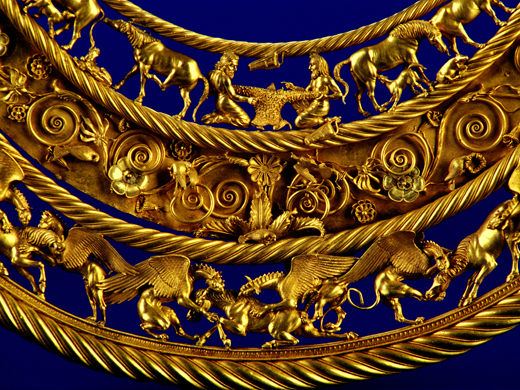In the Altai Territory in southern Russia, archaeologists have discovered an ancient tomb containing the remains of what is thought to be a Scythian ruler from about 2,500 years ago. From the artifacts in the tomb, it is thought he may have ruled on the Russian steppes.
The Scythian people were a group of nomads of Iranian origin that migrated from Central Asia towards Russia in the 8th and 7th centuries BCE. Where the Crimea is today, the Scythian people had a rich and powerful empire. They survived there until the 4th century BCE. The information available on these people comes from accounts by the Greek historian Herodotus.

Archaeologists and anthropologists have discovered and excavated sites in such places such as Kazakhstan and Tyva. The Scythians were a warlike people who were known for their horsemanship. They are one of the earliest people who had mastered horseriding, and they were very mobile. They would fight from horseback. When they migrated, they clashed with the Cimmerians who controlled the Caucasus and warred for thirty years. They had a class of aristocrats who are found today in their elaborate graves in the Valley of the Tsars near Arzhan.
Around the 5th century BCE, the Scythians began trading with Greece, and the wealth of the aristocrats would have increased significantly. They were known for making and wearing elaborate jewelry; some pieces can still be seen today such as the gold necklace found in Tolstaya Mogila in the Ukraine.

The man discovered in the tomb was buried in what appeared to be a cloak made from fabric and gold foil, though the fabric is long gone. His horse is buried with him, as is an iron Scythian sword and a bronze chisel-shaped knife. There was also a melt made of various metals and other pieces of iron in the tomb with him. The remains of a lamb, which could have been his funeral feast, were also present, Mail Online reported.
The new tomb was discovered near the village of Krasny Yar and is thought to be from the time period of 500 to 400 BC. The site had almost been lost from view as it is an area of frequent plowing in the farmed area. A strong ring of stone protected the remains. A tomb like this is very rare and will be very valuable to the historians in discovering more about the nomadic people. There is very little knowledge about the society’s burial practices, and the archaeologists were excited to have found the man with his horse, as it sheds light on the value placed on horses in this ancient culture.
